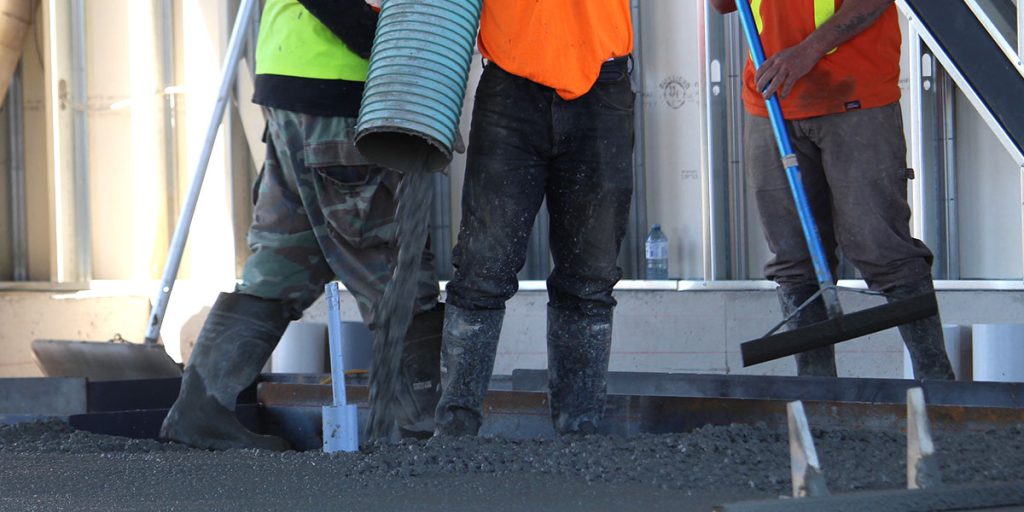
Concrete is the most used building material and it has been used for many years. More than 5,000 years ago, Egyptians mixed mud and straw to form bricks and used gypsum and lime to make mortars. By 200 BC, the Romans were successfully building with concrete and even used animal products in their cement as an early form of admixtures. However, after the fall of the Roman Empire in 476 AD, the techniques for making pozzolan cement were lost until the discovery in 1414 of manuscripts describing those techniques.
A family feud
Modern concrete is due to the invention of Portland Cement in 1824 by Joseph Aspdin. “Joseph called the product Portland cement because he believed set mortar made from it resembled ‘the best Portland stone’ and Portland stone was the most prestigious building stone in use in England at the time,” says Stuart Galloway, President, 20/20 Show Productions and producer of the Canadian Concrete Expo. “However, the patent doesn’t describe what we today call ‘Portland cement’.”
A bricklayer by trade, Joseph experimented with the manufacturing of cement until he created a marketable product. He then went into partnership with a neighbour, William Beverley, set up a production plant in Wakefield, and relocated his family from Leeds to Wakefield. That plant closed in 1838 after the Manchester and Leeds Railway Company purchased the land. Aspdin moved his equipment to a second site nearby in Kirkgate. His younger son, William, ran the plant until 1841 when he ceased to work for his father and Joseph partnered with elder son, James.
Two years later, William established his own plant at Rotherhithe (near London) and used a modified version of his dad’s recipe to introduce a new cement that proved to be substantially stronger than the cement invented by his father. William used higher limestone content, burnt it at a higher temperature and ground the previously discarded clinkered material, thereby increasing wear and tear during the grinding process. The following year, Joseph retired and transferred his share of the business to James. In 1848, James moved the plant to a third site in the area, and that plant continued in operation until 1900. Also, in 1848, William relocated to Kent in order to take advantage of the local’s proximity to large chalk reserves. He never filed for a patent to his modified process, and a history of suspicious business arrangements and missteps proved he may have been dishonest and incompetent.
America’s Innovations
This technology crossed the Atlantic and, by the end of the century, America had built its first concrete bridge (the Alvord Lake Bridge in San Francisco, California) and its first concrete street (in Bellefontaine, Ohio, and is still around today). However, it was much considered only for industrial buildings, since people deemed its aesthetic value as sub-par for residences and other buildings.
In 1875, American mechanical engineer, William Ward, completed the first reinforced concrete home in the US, and it still stands in Port Chester, New York. One of the drivers to choosing concrete was his wife’s fear of fire. Americans expanded the use of concrete and made several advancements. Here are some notable ones leading up to the middle of the 20th Century.
1877 – Ernest L. Ransome patents a system that uses twisted square rods to improve the bond between steel and concrete and begins building with steel-reinforced concrete.
1904 – the first concrete high-rise building (16 stories/210 feet/64 metres) is constructed in Cincinnati, Ohio.
1913 – the first load of ready-mix concrete is delivered in Baltimore, Maryland. The idea of mixing concrete at a centralized plant and then trucking it to the construction site has since revolutionized the concrete industry.
1915 – L.M. Scofield becomes the first company to produce color for concrete (color hardeners, colorwax, integral color, sealers, and chemical stains).
1930’s – air entraining agents are used for the first time in concrete to aid in its resistance against damage from freezing and thawing.
1935 – construction crews place 3,250,000 yards of concrete in order to complete the Hoover Dam.
1938 – John Crossfield files the first patent for concrete overlay, which is created by adding latex to Portland cement, aggregate, and other materials
1950’s – Brad Bowman develops the Bomanite process—the original cast-in-place, colored, textured and imprinted architectural concrete paving
1970’s – fiber is used with concrete in order to increase its strength
1976 – the CN Tower is completed. This concrete and steel building becomes the tallest free-standing building in the world for the next four decades
“Innovation in concrete still continues to this day,” says Galloway. “Some are minor tweaks, but some are real game changers. In the future, concrete will continue to evolve in a way that benefits people’s lives.”

